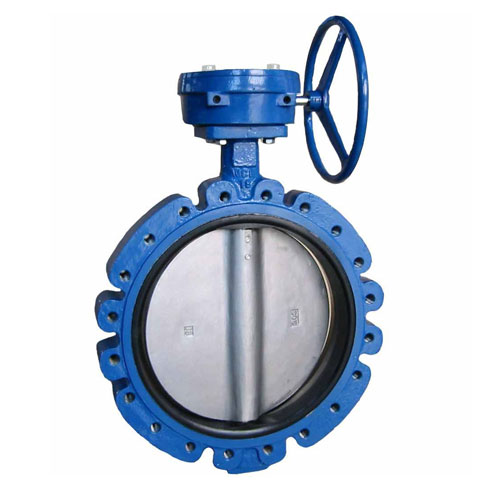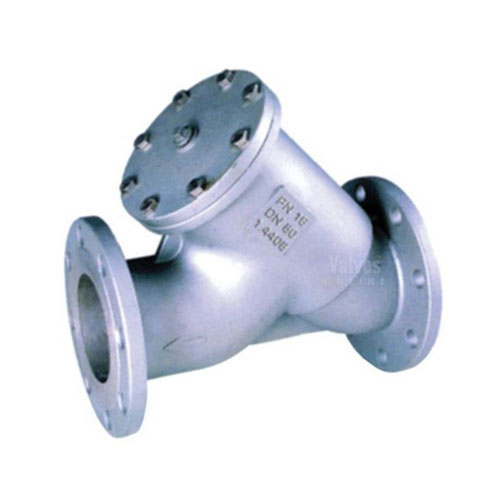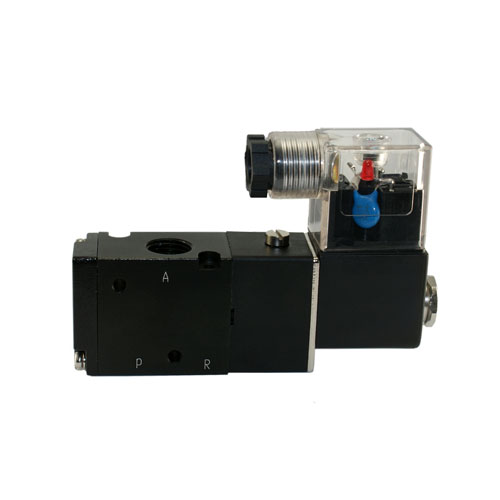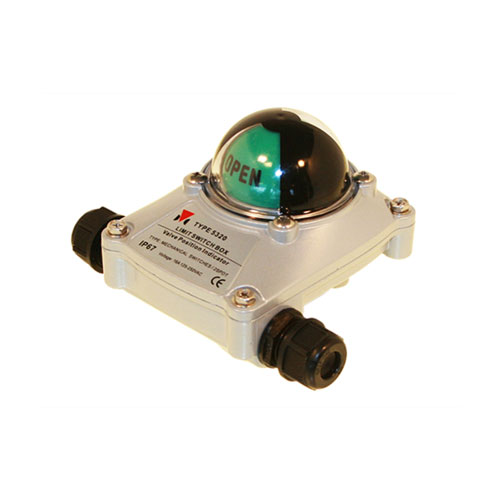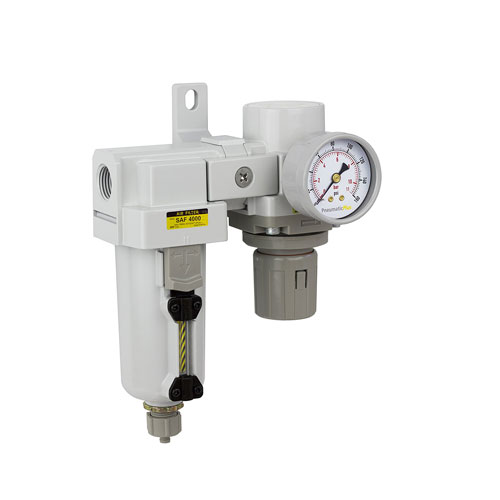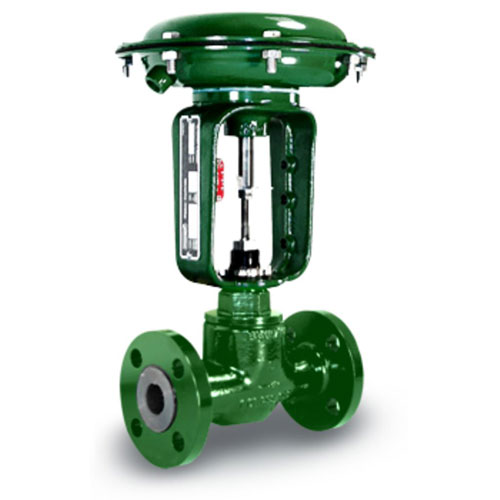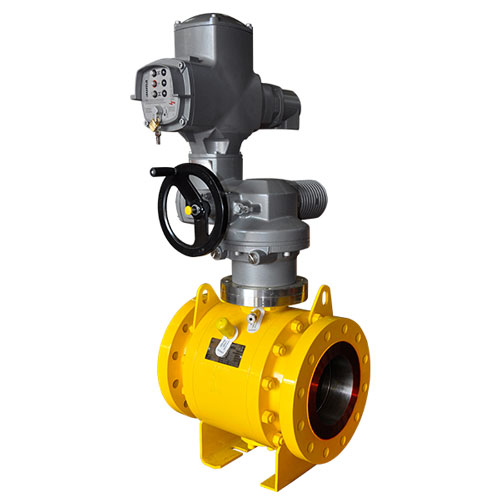Industrial Valves
Ethna extensive line of valve and flow control products include
Industrial Products
Cast Iron –Cast Steel – Forged Steel – Cast Bronze – Forged Brass
PN 6 – PN 400
DN 15 – DN 5000
-196 ⁰C – 900 ⁰C
With suitable sealing material according to the medium/fluid.
Products
1- Globe Valves 9- Gate Valves
2- Ball valves 10- Check valves
3- Butterfly Valves 11- Strainers
4- Steam traps 12- Expansion Joints
5- Pressure Reducing Valves 13- Safety Valves
6- On/Off valves 14- Cryogenic Valves
7- Fire Hydrant 15- Flanges, Gaskets and more...
8- Motor Operated Valves (MOVs) - Control Valves
GLOBE VALVE
Globe valves are ideal for throttling service. Their flow characteristics permit accurate and repeatable flow control. Avoid extremely close throttling when pressure drop exceeds 20% to prevent noise, vibration and possible damage to valves and piping. Precision-machined surfaces provides controlled compression and positive sealing. Easily adjusted stuffing box. Heat-treated stem. Class 150-2500 / PN16-PN420. Ends - Socket Weld ends, Screwed Ends (NPT), Butt Weld Ends or Integrally Flanged Ends. Available in carbon, alloy, stainless and special forged steel.
GATE VALVE
Gate valves are straight-through flow valves which provide positive shutoff with minimal pressure drop and flow turbulence. The barrier to flow is a wedge sliding at right angles to the direction of flow. Cast steel bolted bonnet gate valves are of the outside screw, rising stem design (OS&Y). This type of design places the stem threads external to the valve so they are not contaminated by the flowing media and are accessible for lubrication. Also, the open/closed position of the valve is easily distinguished by the stem position. Class 150-2500 / PN16-PN420. Ends - Socket Weld ends, Screwed Ends (NPT), Butt Weld Ends or Integrally Flanged Ends. Available in carbon, alloy, stainless and special forged steel.
BALL VALVE
Ball valve is a valve with a spherical disc, the part of the valve which controls the flow through it. The sphere has a hole, or port, through the middle so that when the port is in line with both ends of the valve, flow will occur. When the valve is closed, the hole is perpendicular to the ends of the valve, and flow is blocked. The handle or lever will be inline with the port position letting you “see” the valve’s position. The ball valve, along with the butterfly valve and plug valve, are part of the family of quarter turn valves. A trunnion ball valve has additional mechanical anchoring of the ball at the top and the bottom, suitable for larger and higher pressure valves. A floating ball valve is one where the ball is not held in place by a trunnion. In normal operation, this will cause the ball to float downstream slightly. Class 150-2500 / PN16-PN420. Ends - Socket Weld ends, Screwed Ends (NPT), Butt Weld Ends or Integrally Flanged Ends. Available in carbon, alloy, stainless and special forged steel. Available size are 1/2” - 24”.
BUTTERFLY VALVE
Butterfly valves are valves with a circular body and a rotary motion disk closure member which is pivotally supported by its stem. These valves use a flat plate to control the flow of water. Butterfly valves are also used on firefighting apparatus, and typically are used on larger lines, such as front and rear suction ports and tank to pump lines. The valve is similar in operation to a ball valve. Rotating the handle turns the plate either parallel or perpendicular to the flow of water, shutting off the flow. Wafer, LUG and flanged ends are available. DN25-DN1500.
CHECK VALVE
Check valves prevent reversal of flow through pipe lines. They offer relatively low resistance to flow and are particularly suited to low velocity service. The check valves are available in three different design configurations: piston check, ball check, or swing check designs. Fully-guided disc, and precision-machined joint surfaces to provide controlled compression and positive sealing. Class 150-2500 / PN16-PN420. Ends - Socket Weld ends, Screwed Ends (NPT), Butt Weld Ends or Integrally Flanged Ends. Available in carbon, alloy, stainless and special forged steel.
STEAM TRAPS
The optimum efficiency and operation of a steam generating plant relies on the correct management of heat energy within the steam system. Steam, when it has surrendered its heat energy, will form condensate which, at that point, must be discharged from the system. This process is managed by steam traps which detect the presence of condensate and discharge it from the system. Steam traps can be of the thermostatic type that reacts to the change in temperature as condensate forms and the float type that, as condensate rises in a receiver, opens to discharge the liquid from the system.
PLUG VALVE
For decades the Plug Valve has been a proven performer - a long-standing, reliable workhorse in everything from water to chemical service, clear liquids to mining slurries. On reason the plug valve has been around so long is that once installed, it remains functional for decades of uninterrupted on-off, throttling and flow diversion service. The plug valve is used for applications that require tight sealing with good wear resistance for handling fluids with some solids such as paper stock and wastewater. Frequent users include water and wastewater treatment plants, water distribution systems, power and chemical plants, HVAC, paper mills and mining operations.
STRAINER
A device through which a liquid is passed for purification, filtering or separation from solid matter; anything (including a screen or a cloth) used to strain a liquid; any device functioning as a sieve or filter - in special, a perforated screen or openwork (usually at the end of a suction pipe of a pump), used to prevent solid bodies from mixing in a liquid stream or flow line
SIGHT GLASS
Sight glasses enable operators to visually observe processes inside tanks, pipes, reactors and vessels. The modern industrial sight glass is a glass disk held between two metal frames, which are secured by bolts and gaskets, or the glass disc is fused to the metal frame during manufacture. The glass used for this purpose is either soda lime glass or borosilicate glass, and the metal, usually a type of stainless steel, is chosen for desired properties of strength. Borosilicate glass is superior to other formulations in terms of chemical corrosion resistance and temperature tolerance, as well as transparency.
ACTUATOR
Pneumatic Actuators convert compressed gas into energy. This energy is used to induce movement of a valve component from, open to close or vice versa in an on/off application, or partial movement in a positioning or modulating application. A complete range of associated accessories can be supplied for example solenoid valves for remote operation of pneumatic actuators, switchboxes for remote and visual indication of the valve position, pneumatic or electric positioners and/or transmitters for position control and position feedback, travel stops, air filters/regulators/gauges etc. Electric actuators are used for the automation of industrial valves. The requirement of this type of actuator is to transmit a torque that is capable of moving the valve component from open to closed and vice versa. Electric actuators are manufactured with motors that are suited to a range of DC & AC voltages and to suit both on/off, positioning and modulating applications. Enclosures are provided that allow the actuator to be utilized in hazardous and potentially explosive environments. Actuator design can also incorporate “intelligent” communication devices that provide process control functions and diagnostic feedback of the actuators performance.
SOLENOID VALVE
A solenoid valve is an electromechanically operated valve. The valve is controlled by an electric current through a solenoid: in the case of a two-port valve the flow is switched on or off; in the case of a three-port valve, the outflow is switched between the two outlet ports. Multiple solenoid valves can be placed together on a manifold. Solenoid valves are the most frequently used control elements in fluidics. Their tasks are to shut off, release, dose, distribute or mix fluids. They are found in many application areas. Solenoids offer fast and safe switching, high reliability, long service life, good medium compatibility of the materials used, low control power and compact design.
LIMIT SWITCH
Limit switch is a switch operated by the motion of a machine part or presence of an object. They are used for control of a machine, as safety interlocks, or to count objects passing a point. A limit switch is an electromechanical device that consists of an actuator mechanically linked to a set of contacts. When an object comes into contact with the actuator, the device operates the contacts to make or break an electrical connection. Limit switches are used in a variety of applications and environments because of their ruggedness, ease of installation, and reliability of operation.
POSITIONER
Positioners are most commonly used to move a control valve to a specified position so that a process meets specific parameters (flow, pressure, temperature). Electromechanical positioners are conventional pneumatic positioners that have an additional integrated electro-pneumatic transducer. The transducer receives the DC analogue input signal from the control system and converts it to a proportional pneumatic signal which is then sent to the conventional . Conventional pneumatic positioners receive a pneumatic control signal and translate that into the appropriate pneumatic output signal to the control valve actuator. This positione technology has been the stalwart for the process control industry for decades, and is still extensively used.
AIR FILTER
Air Filter Regulators are typically used to provide constantly controlled, filtered, and reduced pressures to compressed air systems for air tools and pneumatic and electro-pneumatic actuators, positioners, and other instruments. These direct-operated regulators are suitable for most air or gas applications.
REGULATING VALVE
A pressure reducing/regulator is a valve that automatically cuts off the flow of a liquid or gas/liquid at a certain pressure. Regulators are used to allow high-pressure fluid supply lines or tanks to be reduced to safe and/or usable pressures for various applications. Gas/liquid pressure regulators are used to regulate the gas/liquid pressure and are not appropriate for measuring flow rates. A pressure regulator’s primary function is to match the flow of gas/liquid through the regulator to the demand for gas/liquid placed upon the system. If the load flow decreases, then the regulator flow must decrease also. If the load flow increases, then the regulator flow must increase in order to keep the controlled pressure from decreasing due to a shortage of gas/liquid in the pressure system.
ON/OFF VALVE
Many industrial processes require the use of on/off valves to permit or shut off the flow of certain media. Motors are typically used for open-close (ON-OFF valves) duty. Automatic stoppage of the motor at fully open and fully closed valve positions is achieved through limit switches. Limit switches are activated either physically through the movement of the valve or torsionally by the motor torque. Typical valve styles include globe valves, angle seat valves, diaphragm valves, plug and ball valves as well as butterfly valves.
SAFETY/RELIEF VALVE
A safety valve is a valve mechanism which automatically releases a substance from a boiler, pressure vessel, or other system, when the pressure or temperature exceeds preset limits. It is one of a set of pressure safety valves (PSV) or pressure relief valves (PRV), which also includes relief valves, safety relief valves, pilot-operated relief valves, low pressure safety valves, and vacuum pressure safety valves. Safety valves also evolved to protect equipment such as pressure vessels (fired or not) and heat exchangers. The term safety valve should be limited to compressible fluid applications (gas, vapor, or steam).
CONTROL VALVE
Control valves are valves used to control conditions such as flow, pressure, temperature, and liquid level by fully or partially opening or closing in response to signals received from controllers that compare a “setpoint” to a “process variable” whose value is provided by sensors that monitor changes in such conditions. The opening or closing of control valves is usually done automatically by electrical, hydraulic or pneumatic actuators. Positioners are used to control the opening or closing of the actuator based on electric, or pneumatic signals. These control signals, traditionally based on 3-15psi (0.2- 1.0bar), more common now are 4-20mA signals for industry, 0-10V for HVAC systems, and the introduction of “Smart” systems, HART, Fieldbus Foundation, and Profibus being the more common protocols. A control valve consists of three main parts in which each part exist in several types and designs: • Valve’s actuator • Valve’s positioner • Valve’s body
MOTOR OPERATED VALVE
Motor Operated Valve (MOV) is an important item of Plant & Piping system. These valves are generally of large size and are used for different applications such as Pump discharge etc. Motor Operated Valves are often called as On-Off valves as the motors serve the purpose of fully opening or fully closing valves in pipelines. For example, cooling water lines, process pipelines where controlling of fluid is not required, motor operated valves can be used to fully allow or fully stop the fluid flow. These valves are not used for throttling purposes as they serve mainly On-Off service application. Motor operated valves can be of various types e.g. Gate/ Ball/ Butterfly etc. with actuator control. Design of Motors and valves can be different. An electric motor is mounted on the valve and geared to the valve stem so that when the motor operates the valve will open or close. For this MOV, motor operated with actuator control from local panel or, from control room is required. There is a requirement of co-ordination among Piping-Electrical-Instrumentation- Process engineers and vendor for design and procurement of such motor operated valves.
FLANGES / GASKETS
Flanges are usually installed on valves larger than DN50 (2’’). For sizes smaller than DN50 (2’’), threaded-type valves are typically used, depending on the application and safety considerations: for example at steam lines, even for sizes below DN50 (2’’), welded type valves are used instead of threaded type ones. Flanges are generally built to ANSI Standard B16.5 (or DIN or other international standards). Rating of flanges is made according to the type of service, material requirement, maximum service temperature and pressure. The following three (3) major valves flanged ends connections are mostly in use nowadays: • Flat face (FF) • Raised face (RF) • Ring type joint (RTJ) **A gasket is a mechanical seal which fills the space between two or more mating surfaces, generally to prevent leakage from or into the joined objects while under compression. Gaskets allow “less-than-perfect” mating surfaces on machine parts where they can fill irregularities. Gaskets are commonly produced by cutting from sheet materials. Gaskets for specific applications, such as high pressure steam systems, may contain asbestos. It is usually desirable that the gasket be made from a material that is to some degree yielding such that it is able to deform and tightly fills the space it is designed for, including any slight irregularities. A few gaskets require an application of sealant directly to the gasket surface to function properly.



